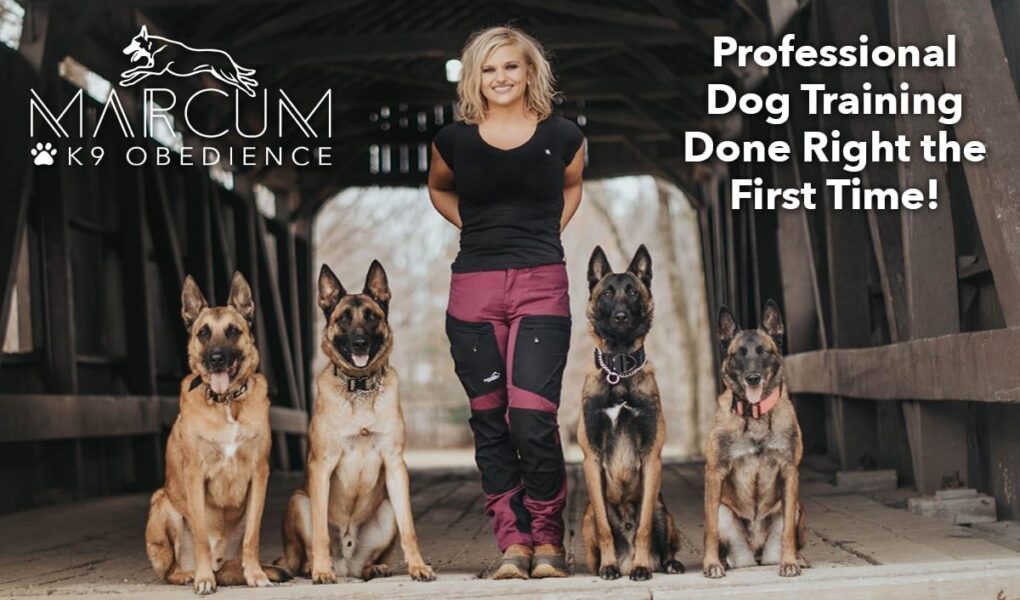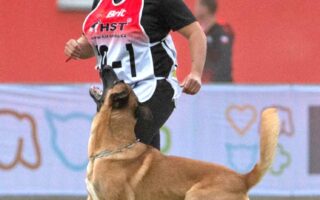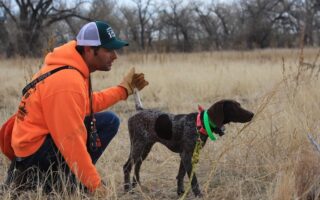Title: The Art of K9 Obedience: Building Bonds Through Training
Introduction:
In a world where the bond between humans and dogs transcends mere companionship, K9 obedience training stands as a cornerstone of harmonious living. It is more than just a series of commands; it’s an intricate dance of trust, communication, and understanding between two species. As tails wag and ears perk up, the journey to a well-trained dog unfolds, nurturing not only discipline but also an unbreakable bond. Through patience and perseverance, pet owners can unlock the potential of their canine companions, transforming them into reliable partners in everyday life. In this article, we will explore the principles of K9 obedience, the methods that inspire pup and owner alike, and the profound impact that training can have on fostering a lasting relationship. Join us as we delve into a world where every bark tells a story of teamwork, respect, and love.
Table of Contents
- Understanding the Foundations of K9 Obedience Training
- Essential Commands Every Dog Should Master
- Positive Reinforcement Techniques for Effective Learning
- Common Challenges and Solutions in K9 Obedience Training
- Q&A
- The Conclusion
Understanding the Foundations of K9 Obedience Training
At the core of effective K9 obedience training lies a solid understanding of canine behavior and communication. Dogs are inherently pack animals, driven by their instincts to follow a leader. To foster a respectful and obedient relationship, it is essential to establish yourself as that leader early on. Positive reinforcement plays a pivotal role in this process, encouraging desired behaviors by rewarding your dog with treats, praise, or playtime. This method not only helps your dog associate commands with positive outcomes but also deepens your bond, fostering trust and security.
Training should be consistent, clear, and conducted in short, engaging sessions to maintain your dog’s attention. Incorporating varied training environments can also help prevent distractions and promote adaptability. Consider these key principles while training:
- Timing: Reward immediately after the desired behavior for better understanding.
- Patience: Each dog learns at their own pace; avoid frustration.
- Socialization: Introduce your dog to different people, places, and experiences.
As you embark on this journey of training, keeping track of progress can serve as motivation for both you and your dog. Below is a simple table to monitor key training milestones:
| Command | Status | Date Introduced |
|---|---|---|
| Sit | Completed | 1/10/2023 |
| Stay | In Progress | 1/15/2023 |
| Come | Not Started | N/A |
Essential Commands Every Dog Should Master
Teaching your dog essential commands is not just about obedience; it fosters a strong bond between you and your furry friend while ensuring their safety. Here are fundamental commands every dog should master:
- Sit: A basic command that keeps your dog calm and controlled.
- Stay: Crucial for keeping your dog in a specific position, preventing them from wandering into danger.
- Come: This command is vital for recall, especially in busy or unpredictable environments.
- Leave it: Teaches your dog to ignore undesirable objects or distractions, which is essential for their safety.
- Heel: Helps control your dog while walking, maintaining a safe and enjoyable experience.
To further enhance your training sessions, consider using the following tips for optimal progress:
| Tip | Description |
|---|---|
| Consistency | Use the same commands and gestures to avoid confusion. |
| Positive Reinforcement | Reward your dog with treats or praise to encourage good behavior. |
| Short Sessions | Keep training sessions brief and engaging to maintain their attention. |
| Regular Practice | Reinforce commands consistently to ensure long-term retention. |
Positive Reinforcement Techniques for Effective Learning
Utilizing positive reinforcement in dog training can create a fun and engaging learning environment that fosters trust and creativity. Rewards for good behavior significantly enhance a dog’s ability to learn commands and develop good habits. Some effective methods include:
- Treats: Small, tasty rewards can motivate your dog to obey commands consistently.
- Praise: A simple “good boy/girl” followed by affection can reinforce desired actions.
- Toys: Using a favorite toy can make training sessions more enjoyable, turning practice into play.
Creating a structured training routine using these techniques is beneficial for both the dog and trainer. Consistency is key, and pairing commands with rewards at the right moment helps solidify their meaning. To illustrate this, here’s a simple reward table you might consider:
| Command | Reward |
|---|---|
| Sit | Small Treat |
| Stay | Praise and a Belly Rub |
| Come | Favorite Toy |
Regularly employing these techniques can cultivate not only effective learning but also a strong bond between you and your four-legged friend.
Common Challenges and Solutions in K9 Obedience Training
Training a K9 can often feel like navigating a complex labyrinth of challenges, each requiring patience and skill to overcome. One common hurdle is inconsistency in commands. When commands are given inconsistently, it confuses the dog and slows the training process. To combat this, it’s crucial for all family members to use the same terminology and hand signals. Another frequent issue is distractions in the environment. Dogs are naturally curious creatures, and external stimuli can easily divert their attention. To create a more focused training session, finding a quiet location or gradually increasing distractions can be an effective strategy.
Furthermore, lack of motivation can significantly hinder obedience training. Dogs respond best to positive reinforcement, so utilizing treats, toys, or praise can keep them engaged. Additionally, incorrect timing of rewards can lead to confusion about what behavior is being reinforced. It’s essential to reward your dog immediately after they perform the desired action. Below is a simple table that summarizes useful solutions for common training challenges:
| Challenge | Solution |
|---|---|
| Inconsistent Commands | Standardize terminology among all handlers |
| Distractions | Start in a quiet area, then gradually add distractions |
| Lack of Motivation | Use positive reinforcement like treats and toys |
| Incorrect Timing | Reward immediately after the desired behavior |
Q&A
Q&A: Understanding K9 Obedience Training
Q1: What exactly is K9 obedience training?
A1: K9 obedience training is a structured approach designed to teach dogs basic commands and proper behavior. It focuses on establishing clear communication between the handler and the dog, enhancing their bond while ensuring that the canine can respond reliably to commands like “sit,” “stay,” “come,” and “heel.” Through consistent practice and positive reinforcement, obedience training aims to cultivate a well-mannered pet who is a joy to be around.
Q2: Why is obedience training important for dogs?
A2: Obedience training is crucial for several reasons. First and foremost, it promotes safety—both for the dog and others in the environment. A trained dog is less likely to engage in dangerous behaviors like running into traffic or approaching unfamiliar animals. Additionally, obedience training enhances socialization skills, making dogs more adaptable to various situations and environments. It also fosters a deeper bond between the dog and its owner, leading to a more harmonious home life.
Q3: At what age should I start obedience training with my dog?
A3: The ideal time to start obedience training is during the puppy stage, around 7 to 8 weeks of age. At this age, pups are particularly receptive to learning and socialization. However, it’s never too late to begin training! Adult dogs can also learn new commands and behaviors, though it may take a bit more patience and consistency. The key is to tailor your approach to the dog’s age and temperament.
Q4: What techniques are typically used in K9 obedience training?
A4: Common techniques in K9 obedience training include positive reinforcement, clicker training, and leash training. Positive reinforcement involves rewarding desired behaviors with treats, praise, or playtime, which encourages the dog to repeat those behaviors. Clicker training uses a distinct sound—a clicker—to mark the exact moment a dog performs the correct behavior, followed by a reward. Leash training emphasizes teaching the dog to walk nicely on a leash without pulling, establishing control during walks.
Q5: How long does it usually take for a dog to learn obedience commands?
A5: The time it takes for a dog to learn obedience commands can vary widely depending on factors such as the dog’s age, temperament, and previous training experience. Generally, with consistent practice and positive reinforcement, dogs can begin to grasp basic commands within a few weeks. However, mastering these commands often takes longer and requires ongoing reinforcement to maintain good behavior over time.
Q6: What role do owners play in the training process?
A6: Owners play a pivotal role in the training process. Consistency, patience, and positive reinforcement from the owner are key to success. It’s important for owners to practice the commands regularly and to engage in training sessions that are short, fun, and productive. Additionally, owners should work on building a strong relationship with their dog, as trust and bond can significantly enhance the effectiveness of the training.
Q7: Are there any common challenges in K9 obedience training?
A7: Yes, several challenges can arise during K9 obedience training. Distractions from the environment, lack of motivation from the dog, and inconsistent commands from the owner can hinder progress. Additionally, some breeds may be more stubborn or independent, requiring tailored approaches to keep them engaged. It’s crucial to remain patient, adapt training methods, and keep sessions enjoyable to overcome these challenges.
Q8: How can I find a reputable obedience training program?
A8: To find a reputable obedience training program, start by seeking recommendations from veterinarians, friends, or local pet stores. Look for trainers who use positive reinforcement techniques and are certified or affiliated with professional organizations. Observing a class before enrolling can also give you insight into the trainer’s methods and the class environment, helping you determine if it aligns with your goals for your dog.
Q9: Can K9 obedience training benefit adult dogs as well?
A9: Absolutely! K9 obedience training is beneficial for adult dogs, too. Whether they need to learn new commands or correct undesirable behaviors, adult dogs can thrive in a training environment. While it may take a bit longer for some adult dogs to adapt to training, with the right approach, they can achieve remarkable results and enjoy the mental stimulation that training provides.
Q10: What are the long-term benefits of K9 obedience training?
A10: The long-term benefits of K9 obedience training are significant. Trained dogs tend to have better behavior, reducing the likelihood of problems such as jumping on guests or excessive barking. This training can lead to a more enriching and enjoyable relationship with your pet, increased safety in public spaces, and a happier home environment. Ultimately, obedience training promotes not just discipline, but also a well-rounded and happy canine companion.
The Conclusion
As we draw our exploration of K9 obedience to a close, it becomes clear that the bond between a dog and its handler transcends mere commands and responses. Through the art of training, we foster an environment of trust and mutual respect, shaping not just a well-behaved companion, but a loyal partner in life’s journey. Each training session is a stepping stone, paving the way for better communication and understanding. Whether you’re a seasoned trainer or a novice pet owner, the principles of obedience are an ongoing adventure filled with discovery, patience, and joy.
Embracing this journey not only enhances your dog’s behavior but enriches your shared experiences, creating a harmonious relationship that lasts a lifetime. So, as you embark on your own K9 training endeavors, remember that every command learned, every trick perfected, and every challenge overcome is a testament to the extraordinary bond that exists between you and your four-legged friend. Here’s to the many adventures ahead, fueled by love, patience, and the unwavering dedication to obedience!



